An Eye Tracking Study of the Application of Gestalt Theory in Photography
Abstract
:Introduction
Literature Review
Gestalt theory
Principle of closure
Principle of similarity
Principle of proximity
Principle of figure-ground
The Relationship Between Photography and Principles of Gestalt
Eye movement
Fixation duration and number of fixations
Number of saccades and saccade duration
Spatial Dispersion Index (SDI) of fixation

Methodology
Experimental design
Participants
Experimental stimuli
Experimental procedure
Results and Discussion
The effect of gestalt properties
The effect of gestalt properties in images on subjective evaluation
Conclusion
Ethics and Conflict of Interest
Acknowledgments
References
- Antes, J. R. 1974. The time course of picture viewing. Journal of Experimental Psychology 103, 1: 62–70. [Google Scholar] [CrossRef]
- Arnheim, R. 1969. Visual thinking. University of California Press. [Google Scholar]
- Arnheim, R. 1974. Art and visual perception: The new version. University of California Press. [Google Scholar]
- Beelders, T., and L. Bergh. 2020. The role that composition plays in determining how a viewer looks at landscape art. Journal of Eye Movement Research 13, 2: 1–23. [Google Scholar] [CrossRef]
- Berger, J. 1974. Ways of seeing. British Broadcasting Corporation. [Google Scholar]
- Berlyne, D. 1971. Aesthetics and psychobiology. Appleton Century Crofts. [Google Scholar]
- Buswell, G. T. 1935. How people look at pictures. University of Chicago Press. [Google Scholar]
- Carniglia, E., M. Caputi, V. Manfredi, D. Zambarbieri, and E. Pessa. 2012. The influence of emotional picture thematic content on exploratory eye movements. Journal of Eye Movement Research 4, 4: 1–9. [Google Scholar] [CrossRef]
- Checkosky, S. F., and D. Whitlock. 1973. The effects of pattern goodness on recognition time in a memory search task. Journal of Experimental Psychology 100, 2: 341–348. [Google Scholar] [CrossRef]
- Chiang, T. J. 2002. Perception & photography. Xueling Wenhua Publishing. [Google Scholar]
- Chiang, T. J. 2014. Perception & photography. China Photographic Publishing House. [Google Scholar]
- Clay, V., P. König, and S. König. 2019. Eye tracking in virtual reality. Journal of Eye Movement Research 12, 1: 1–18. [Google Scholar] [CrossRef]
- Clay, V., J. Schrumpf, Y. Tessenow, H. Leder, U. Ansorge, and P. König. 2020. A quantitative analysis of the taxonomy of artistic styles. Journal of Eye Movement Research 13, 2: 1–19. [Google Scholar] [CrossRef]
- Duchowski, A. T. 2003. Eye tracking methodology: Theory and practice. Springer-Verlag. [Google Scholar]
- Evans, K. M., R. A. Jacobs, J. A. Tarduno, and J. B. Pelz. 2012. Collecting and analyzing eye-tracking data in outdoor environments. Journal of Eye Movement Research 5, 2: 1–19. [Google Scholar] [CrossRef]
- Fink, L. K., E. B. Lange, and R. Groner. 2019. The application of eye-tracking in music research. Journal of Eye Movement Research 11, 2: 1–4. [Google Scholar] [CrossRef]
- Groner, R., and M. Groner. 1982. Edited by R. Groner and P. Fraisse. Towards a hypothetico-deductive theory of cognitive activity. In Cognition and eye movements. North Holland: pp. 155–168. [Google Scholar]
- Groner, R., and M. Groner. 1983. Edited by R. Groner, C. Menz, D. Fisher and R. A. Monty. A stochastic hypothesis testing model for multi-term series problems, based on eye fixations. In Eye movements and psychological functions: International views. Lawrence Erlbaum. [Google Scholar]
- Groner, R., and M. T. Groner. 1989. Attention and eye movement control: an overview. European Archives of Psychiatry and Neurological Sciences 239, 1: 9–16. [Google Scholar] [CrossRef]
- Gombrich, E. H. 1982. The image and the eye. Phaidon Press. [Google Scholar]
- Gombrich, E. H. 1984. A sense of order. Phaidon Press. [Google Scholar]
- Gombrich, E. H. 1995. The story of art. Phaidon Press. [Google Scholar]
- Han, F. N., and I. Y. Cheng. 2005. Visual analysis of photographic works from a gestalt psychological perspective . Dissertation NTUA, Department of Graphic Communication Arts. [Google Scholar]
- Henderson, J. M. 2007. Regarding scenes. Current Directions in Psychological Science 16, 4: 219–222. [Google Scholar] [CrossRef]
- Henderson, J. M., and A. Hollingworth. 1998. Edited by U. Geoffrey. Eye movement during scene viewing: An overview. In Eye guidance in reading and scene perception. Elsevier Science: pp. 269–293. [Google Scholar]
- Henderson, J. M., P. A. Weeks, and A. Hollingworth. 1999. The effects of semantic consistency on eye movements during complex scene viewing. Journal of Experimental Psychology: Human Perception & Performance 25, 1: 210–228. [Google Scholar] [CrossRef]
- Jenny, P. 1991. The sensual fundamentals of design: Text and pictures on the development of personal processes of design. vdf Hochschulverlag. [Google Scholar]
- Jenny, P. 2012. The artist’s eye: Learning to see. Princeton Architectural Press. [Google Scholar]
- Kepes, G. 1944. Language of vision. Paul Theobald & Co. [Google Scholar]
- Kim, S., and L. J. Lombardino. 2015. Comparing graphs and text: Effects of complexity and task. Journal of Eye Movement Research 8, 3: 1–17. [Google Scholar] [CrossRef]
- Koffka, K. 1935. Principles of gestalt psychology. Harcourt, Brace, & World. [Google Scholar]
- Krejtz, K., J. Żurawska, A. Duchowski, and S. Wichary. 2020. Pupillary and microsaccadic responses to cognitive effort and emotional arousal during complex decision making. Journal of Eye Movement Research 13, 5: 1–15. [Google Scholar] [CrossRef]
- Krueger, E., A. Schneider, B. D. Sawyer, A. Chavaillaz, A. Sonderegger, R. Groner, and P. A. Hancock. 2019. Microsaccades distinguish looking from seeing. Journal of Eye Movement Research 12, 6: 2. [Google Scholar] [CrossRef]
- Liu, C., K. Herrup, S. Goto, and B. E. Shi. 2020. Viewing garden scenes: Interaction between gaze behavior and physiological responses. Journal of Eye Movement Research 13, 1: 1–15. [Google Scholar] [CrossRef]
- Lu, W. Y. 2010. Research into the application of gestalt theory in photographic education using weekly records. Research in Arts Education 20, 1: 37–64. [Google Scholar] [CrossRef]
- Ma, M. Y., and H. C. Chuang. 2017. An exploratory study of the effect of enclosed structure on type design with fixation dispersion: Evidence from eye movements. International Journal of Technology and Design Education 27, 1: 149–164. [Google Scholar] [CrossRef]
- Ma, M. Y., and H. C. Chuang. 2015. How form and structure of Chinese characters affect eye movement control. Journal of Eye Movement Research 8, 3: 1–12. [Google Scholar] [CrossRef]
- Maritain, J., and M. Rader. 1966. A modern book of esthetics. Holt, Rinehart & Winston. [Google Scholar]
- Martinez-Conde, S., R. Engbert, and R. Groner. 2020. Microsaccades: Empirical research and methodological advances - Introduction to part 1 of the thematic special issue. Journal of Eye Movement Research 12, 6: 1. [Google Scholar] [CrossRef]
- Megaw, E. D., and J. Richardson. 1979. Target uncertainty and visual scanning strategies. Human Factors 21, 4: 302–315. [Google Scholar] [CrossRef]
- Moholy-Nagy, L. 1947. Vision in motion. Routledge, Paul Theobald & Co. [Google Scholar]
- Newbury, D. 1995. Towards a new practice in photographic education. Unpublished doctor dissertation, University of Central England. [Google Scholar]
- Ooms, K., L. Dupont, L. Lapon, and S. Popelka. 2015. Accuracy and precision of fixation locations recorded with the low-cost Eye Tribe tracker in different experimental set-ups. Journal of Eye Movement Research 8, 1: 1–24. [Google Scholar] [CrossRef]
- Rayner, K. 1998. Eye movements in reading and information processing: 20 years of research. Psychological Bulletin 124, 3: 372–422. [Google Scholar] [CrossRef]
- Rayner, K. 2009. Eye movements in reading: Models and data. Journal of Eye Movement Research 2, 5: 1–10. [Google Scholar] [CrossRef]
- Reber, R., P. Winkielman, and N. Schwarz. 1998. Effects of perceptual fluency on affective judgments. Psychological Science 9, 1: 45–48. [Google Scholar] [CrossRef]
- Rogers, A., and D. Allen. 1996. What’s happening to photography. Journal of Art and Design Education 15, 1: 23–30. [Google Scholar] [CrossRef]
- Rosenberg, R., and R. Groner. 2022. Eye tracking and visual arts. Introduction to the special thematic issue. Journal of Eye Movement Research 13, 2: 1–10. [Google Scholar] [CrossRef]
- Salvucci, D. D., and J. R. Anderson. 1998. Tracing eye movement protocols with cognitive process models. Proceedings of the Twentieth Annual Conference of the Cognitive Science Society, Erlbaum. [Google Scholar]
- Sancarlo, R., Z. Dare, J. Arato, and R. Rosenberg. 2020. Does pictorial composition guide the eye? Investigating four centuries of last supper pictures. Journal of Eye Movement Research 12, 2: 1–13. [Google Scholar] [CrossRef]
- Schneider, A., A. Sonderegger, E. Krueger, Q. Meteier, P. Luethold, and A. Chavaillaz. 2021. The interplay between task difficulty and microsaccade rate: Evidence for the critical role of visual load. Journal of Eye Movement Research 13, 5: 1–12. [Google Scholar] [CrossRef]
- Smith, T. J., and J. M. Henderson. 2008. Edit blindness: The relationship between attention and global change blindness in dynamic scenes. Journal of Eye Movement Research 2, 2: 1–17. [Google Scholar] [CrossRef]
- Solso, R. L. 1997. Cognition and the visual arts. MIT Press. [Google Scholar]
- Sternberg, R. J., and K. Sternberg. 2012. Cognitive psychology. Cengage Learning. [Google Scholar]
- Wade, N. J. 2020. Looking at Buswell’s pictures. Journal of Eye Movement Research 13, 2: 1–17. [Google Scholar] [CrossRef]
- Weng, P. W., and B. W. Tsai. 2006. Spatial dispersion index: Old conception, new formula. Journal of Taiwan Geographic Information Science 4, 1: 1–12. [Google Scholar] [CrossRef]
- Wertheimer, M. 1922. Untersuchungen zur Lehre von der Gestalt. Psychologische Forschung 1: 47–58. [Google Scholar] [CrossRef]
- Wertheimer, M. 1923. Untersuchungen zur Lehre von der Gestalt, II. Psychologische Forschung 4, 1: 301–350. [Google Scholar] [CrossRef]
- Wilson, A., and A. Chatterjee. 2005. The assessment of preference for balance: Introducing a new test. Empirical Studies of the Arts 23, 2: 165–180. [Google Scholar] [CrossRef]
- Yarbus, A. L. 1967. Eye movement and vision. Plenum Press. [Google Scholar]
- Yeh, S. L. 2000. Structure detection of Chinese characters: Visual search slope as an index of similarity between different-structured characters. Chinese Journal of Psychology 42, 2: 191–216. [Google Scholar]
- Zakia, R. D. 1993. Photography and visual perception. Journal of Aesthetic Education 27, 4: 67–81. [Google Scholar] [CrossRef]
- Zakia, R. D. 1997. Perception and imaging. Focal. [Google Scholar]
- Zakia, R. D. 2002. Perception and imaging. Focal. [Google Scholar]

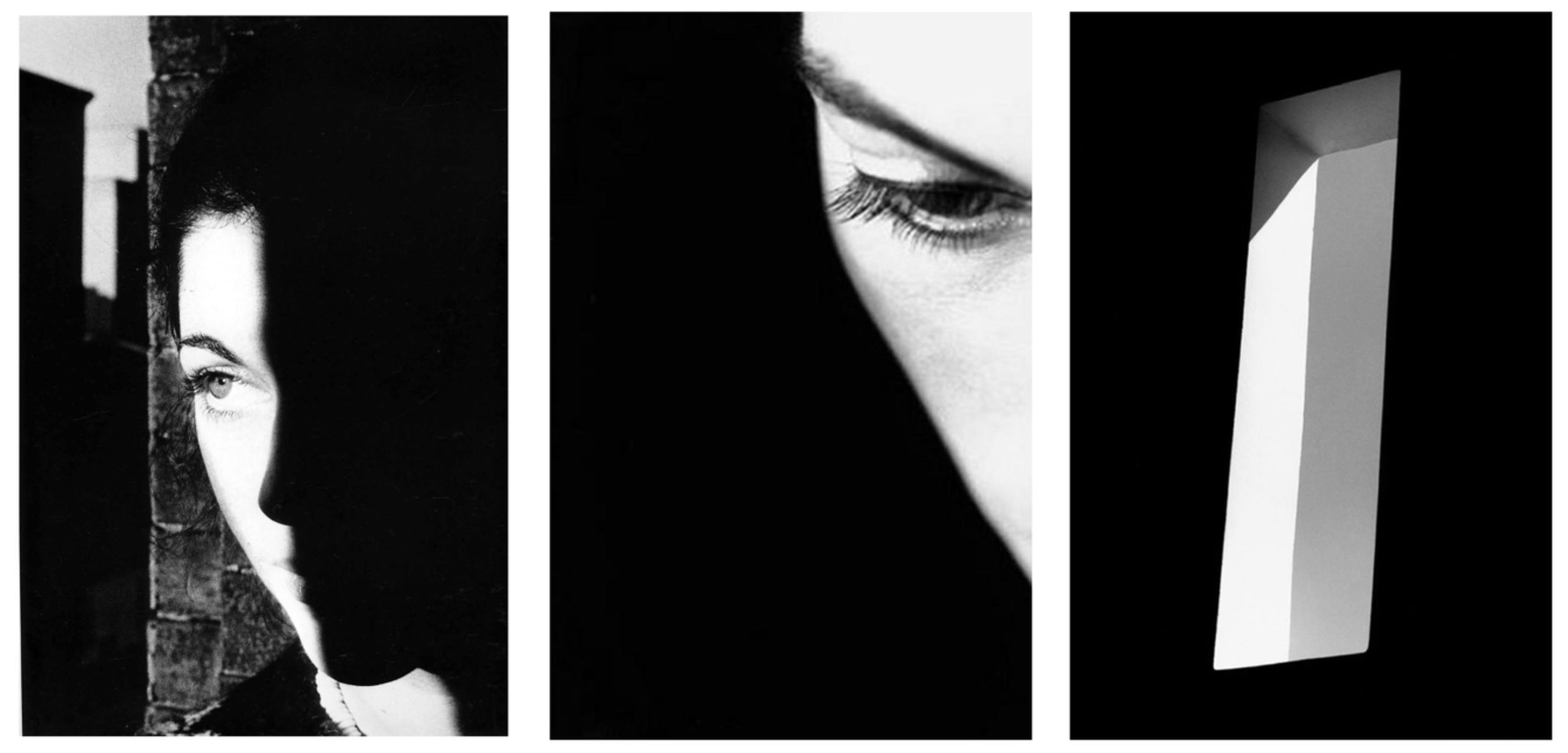
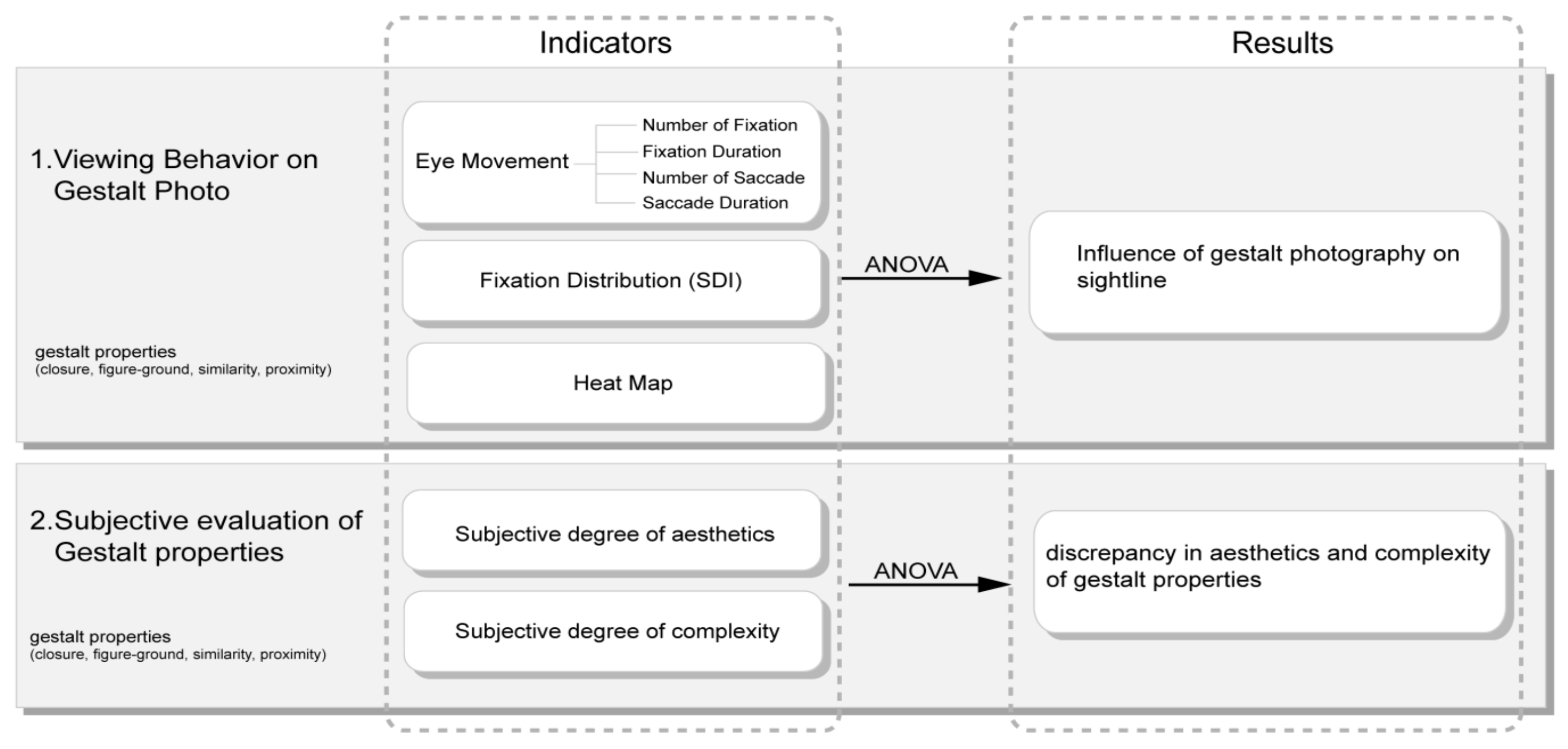

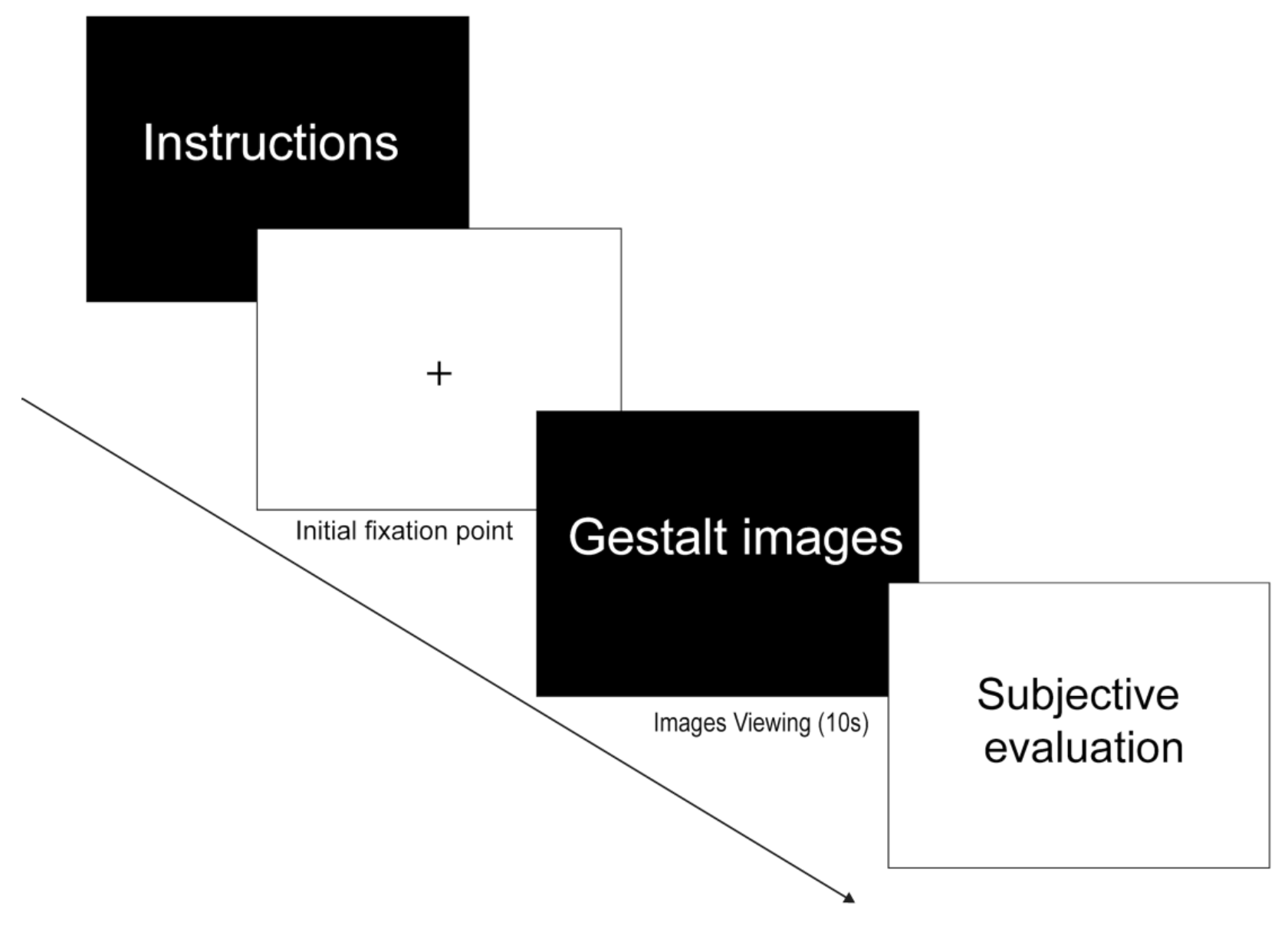

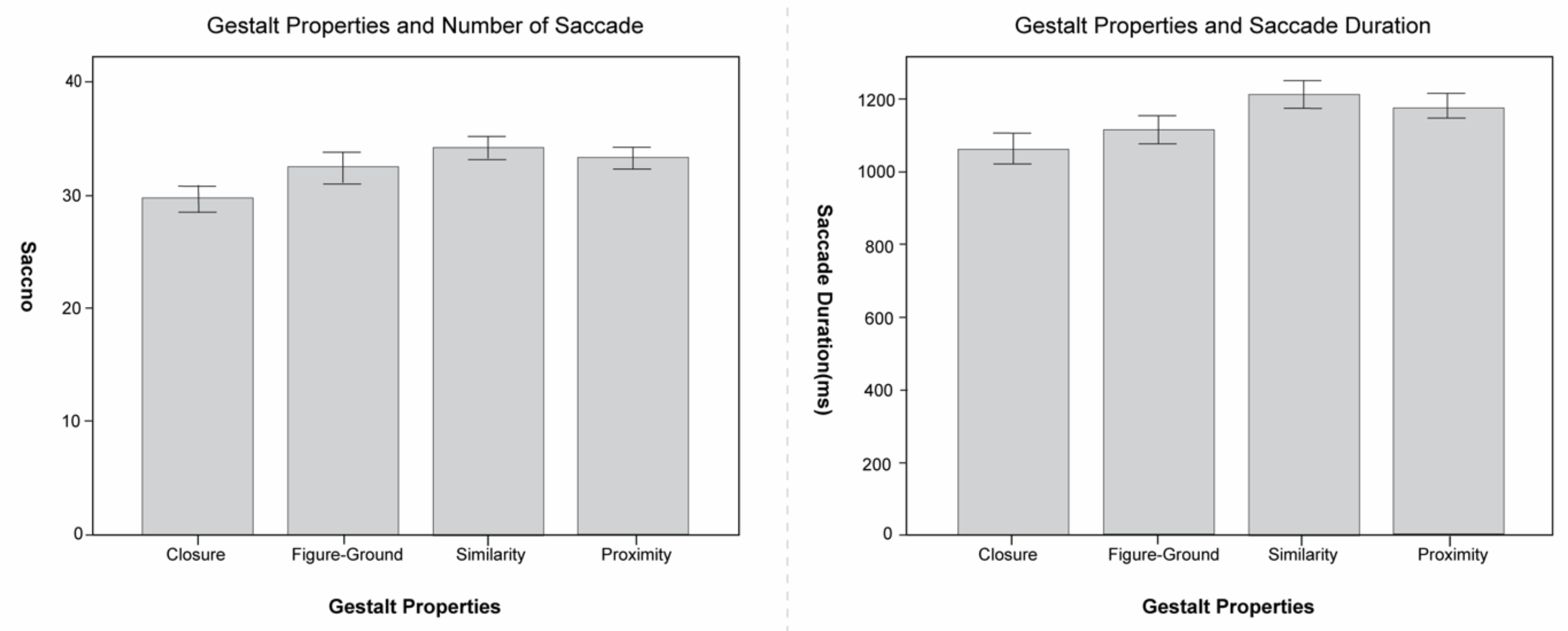

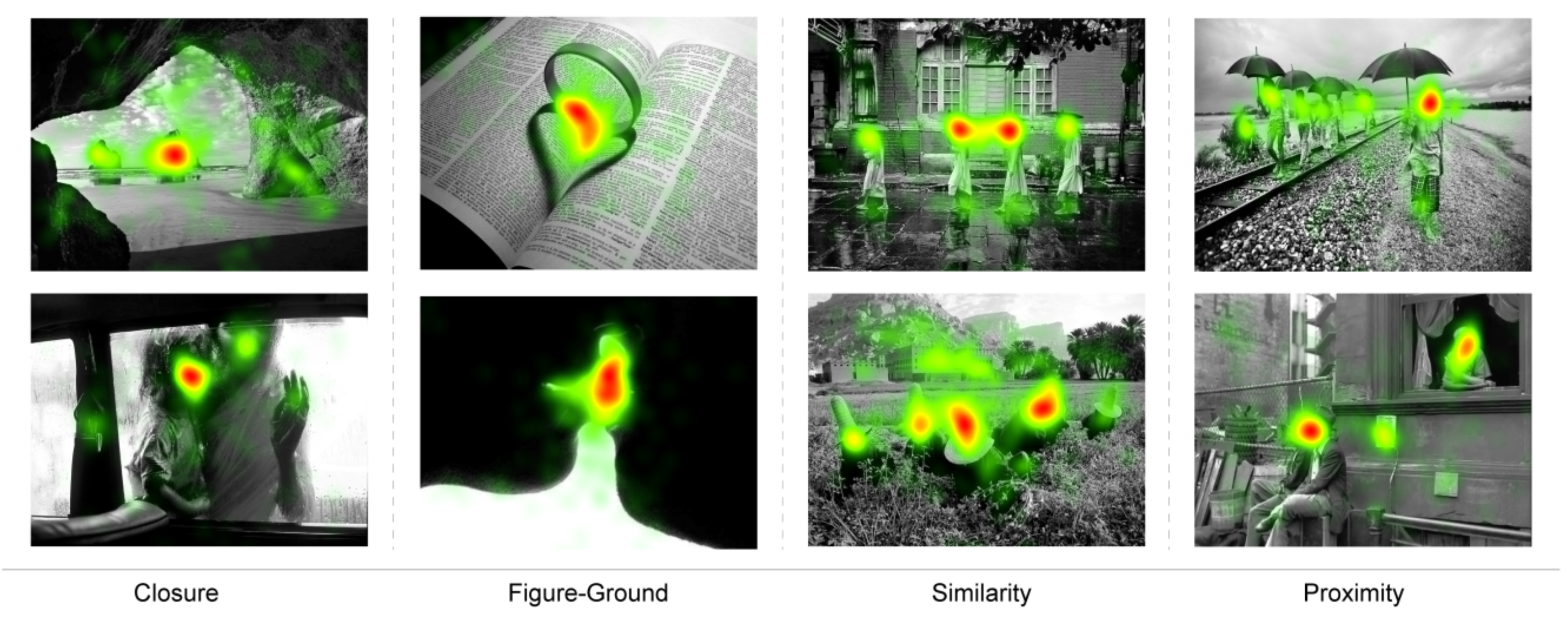

 |
Copyright © 2023. This article is licensed under a Creative Commons Attribution 4.0 International License.
Share and Cite
Chuang, H.-C.; Tseng, H.-Y.; Tang, D.-L. An Eye Tracking Study of the Application of Gestalt Theory in Photography. J. Eye Mov. Res. 2023, 16, 1-15. https://doi.org/10.16910/jemr.16.1.5
Chuang H-C, Tseng H-Y, Tang D-L. An Eye Tracking Study of the Application of Gestalt Theory in Photography. Journal of Eye Movement Research. 2023; 16(1):1-15. https://doi.org/10.16910/jemr.16.1.5
Chicago/Turabian StyleChuang, Hsien-Chih, Han-Yi Tseng, and Da-Lun Tang. 2023. "An Eye Tracking Study of the Application of Gestalt Theory in Photography" Journal of Eye Movement Research 16, no. 1: 1-15. https://doi.org/10.16910/jemr.16.1.5
APA StyleChuang, H.-C., Tseng, H.-Y., & Tang, D.-L. (2023). An Eye Tracking Study of the Application of Gestalt Theory in Photography. Journal of Eye Movement Research, 16(1), 1-15. https://doi.org/10.16910/jemr.16.1.5



